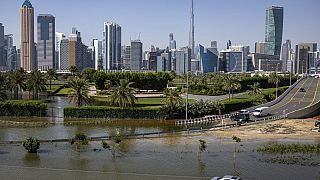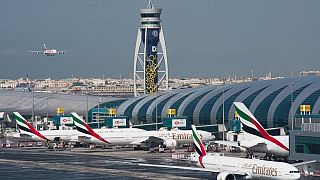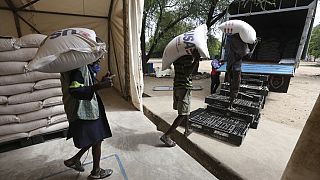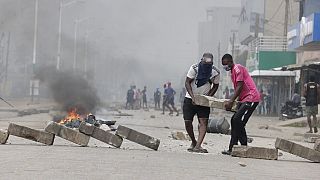United Arab Emirates
The United Arab Emirates tried to wring itself out Thursday after the heaviest recorded rainfall ever to hit the desert nation, with its main airport allowing more flights.
Dubai International Airport, the world's busiest for international travel, allowed global carriers to again fly into Terminal 1 at the airfield.
And long-haul carrier Emirates, crucial to East-West travel, began allowing local passengers to arrive at Terminal 3, their base of operations.
However, Dubai Airports CEO Paul Griffiths told The Associated Press that the airfield needed at least another 24 hours to resume operations close to its usual schedule.
The airport ended up needing 22 tankers with vacuum pumps to get water off its grounds.
Griffiths acknowledged that taxiways flooded during the rains, though the airport's runways remained free of water to safely operate.
Emirates, whose operations had been struggling since the storm Tuesday, had stopped travelers flying out of the UAE from checking into their flights as they tried to move out connecting passengers.
Pilots and flight crews also had a hard time reaching the airport given the water on roadways.
But on Thursday, Emirates lifted that order to allow customers into the airport.
That saw some 2,000 people come into Terminal 3, again sparking long lines, Griffiths acknowledged.
Some travelers who arrived in Dubai described hourslong waits to get their baggage, with some just giving up to head home or to whatever hotel would have them.
The UAE typically sees little rainfall in its arid desert climate, but a massive storm forecasters had been warning about for days blew through the country's seven Emirates.
By the end of Tuesday, more than 142 millimeters (5.59 inches) of rainfall had soaked Dubai over 24 hours.
An average year sees 94.7 millimeters (3.73 inches) of rain at Dubai International Airport.
Other areas of the country saw even more precipitation.
The UAE's drainage systems quickly became overwhelmed, flooding out neighborhoods, business districts and even portions of the 12-lane Sheikh Zayed Road highway running through Dubai.
The state-run WAM news agency called the rain “a historic weather event” that surpassed “anything documented since the start of data collection in 1949.”
Authorities have offered no overall damage or injury information from the floods, which killed at least one person.
The flooding sparked speculation that the UAE's aggressive campaign of cloud seeding - flying small planes through clouds dispersing chemicals aimed at getting rain to fall - may have contributed to the deluge.
But experts said the storm systems that produced the rain were forecast well in advance and that cloud seeding alone would not have caused such flooding.
Scientists also say climate change is responsible for more intense and more frequent extreme storms, droughts, floods and wildfires around the world.
Dubai hosted the United Nations’ COP28 climate talks just last year.
Abu Dhabi’s state-linked newspaper The National in an editorial Thursday described the heavy rains as a warning to countries in the wider Persian Gulf region to “climate-proof their futures.”











00:26
Passengers no longer have to remove shoes at US airport screening
01:00
Pix of the Day: July 2, 2025
01:00
Bear disrupts flights at Yamagata Airport, forces runway closure
01:21
Wisk Aero: The electric flying taxis billed as the future of aviation
01:29
Haiti sees first domestic flight in seven months take off from Port-au-Prince
02:24
Racial profiling still rife across the EU, Council of Europe says